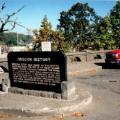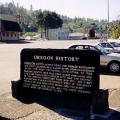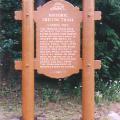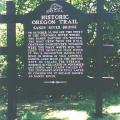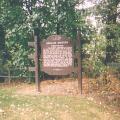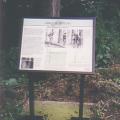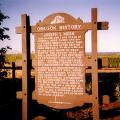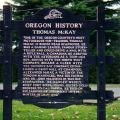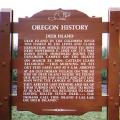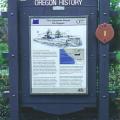Oregon City - once known as Willamette Falls - was early the site of an Indian salmon fishing village.
Just Added
Oregon City - supply point for pioneer emigrants was first located as a claim by Dr. John McLoughlin in 1829.
The Pioneer Road here detoured the Columbia River Rapids and Mount Hood to the Willamette Valley. The road at first followed an old Indian trail. The later name was Barlow Road.
The prominent monolith across the river was named Beacon Rock by Lewis and Clark, November 2, 1805.
Captain George Vancouver in a voyage of exploration to the northwest coast of America ordered by the British Admiralty Office assigned Lieutenant William Robert Broughton, Commander of
On Oct. 30th, 1792 off the point in the Columbia River where the Sandy empties its waters the boat crew from the H.M.S.
This pioneer community gateway to the Columbia Gorge was settled in the 1850’s.
This short trail leads to the Willamette Stone, the surveyor's monument that is the point of origin for all public land surveys in Oregon and Washington. The landmark was established on June 4, 1851 by John B.
One of the Oregon Country's most picturesque fur-traders, Thomas McKay, is buried near Scappoose. He was a daring leader, famous storyteller and could drive a nail with a rifle ball.
Deer Island in the Columbia was named by the Lewis and Clark Expedition which stopped to dine here November 5, 1805 on its way down river.
Prior to the attack on Pearl Harbor, a contingent of JapaneseI-Class submarines sailed from Yokosuka via the Marshall Islands to take up positions off Hawaii and the coast of North America.
